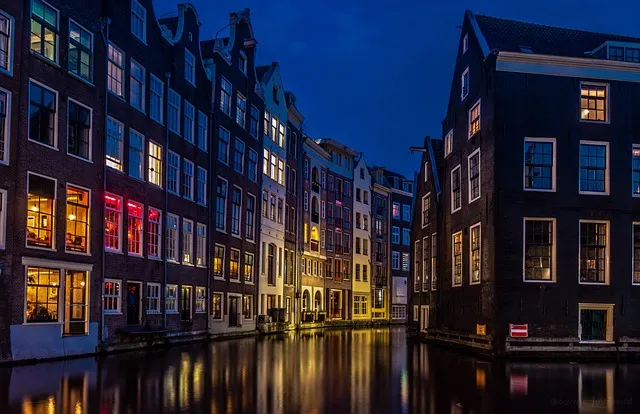
The Netherlands announces subsidies for €998,330,000 for production of renewable hydrogen with a electrolysers.
Do you want to produce renewable hydrogen with an electrolyser? And do you have plans for this? Then you will soon be able to apply for a subsidy via the OWE scheme again. To help you prepare your application, we provide you with an overview of the changes compared to the OWE in 2023.
What’s different in 2024?
- The official name changes: Subsidy scheme for large-scale production of fully renewable hydrogen via electrolysis. Because it is a follow-up to the OWE scheme in 2023, we will continue to use the term OWE.
- More subsidies are available. The total budget is €998,330,000.
- You may apply for a maximum of half of the total. That is €499,165,000.
- You will not receive a subsidy for projects that have previously received SDE++ or OWE subsidy . You can combine this with other subsidies, such as IPCEI Hydrogen .
Requirements for the installation
🔥 What about we co-host a webinar? Let’s educate, captivate, and convert the hydrogen economy!
Hydrogen Central is the global go-to online magazine for the hydrogen economy, we can help you host impactful webinars that become a global reference on your topic and are an evergreen source of leads. Click here to request more details
- Your installation must have at least 0.5 megawatts of nominal electrical input power, but the upper limit of 50 megawatts disappears. So there is no maximum on the number of megawatts.
- We have adjusted and clarified the nominal electrical input power of the electrolyser. This concerns the direct current input power of the electrolyser, at the beginning of its life.
- If the hydrogen pressure in your installation is increased to 70 bar, the costs for the compressor are covered by the subsidy. Compression to very high pressure is intended for storage and transport and is therefore not covered by the subsidy.
Ranking of your application
- You are no longer required to have a final environmental permit with an environmental component with your application. Instead, you can now also send the application for the environmental part of the environmental permit with your subsidy application. That does have a disadvantage. With the application for the environmental permit, we increase the ranking amount by 25%. You will therefore be 25% lower in the ranking if you do not have a final environmental permit. The final environmental permit remains necessary to receive advance payments.
- We include previously received investment subsidies in the calculation of the ranking amount. The formula for the ranking amount is: ranking amount = (investment subsidy amount in € + previously provided investment subsidy in € + the maximum operating subsidy amount in €) / nominal electrical input power of the electrolyser
- When ranking, we no longer make a distinction between projects with a direct line, grid-connected projects and double-connected projects.
Your maximum subsidy amount
- You will be reimbursed for a larger part of your investment costs. In the new application round you will be reimbursed for a maximum of 80% of the investment amount. This was 40%, or 50% for medium-sized or 60% for small businesses. The SME does not receive any additional benefit from the investment subsidy.
- To determine the eligible investment costs for an installation of more than 30 megawatts, we do not take the costs of a reference installation into account. We also call this the unprofitable top .
- You will receive the operating part (operating subsidy amount) over a minimum of 5 and a maximum of 10 years after the completion of your installation. This was 7 to 15 years. You receive the operating portion for the actually produced fully renewable hydrogen.
Feasibility of your project
- In the feasibility study you must indicate who will buy the hydrogen. This is not new. What is new is that you must indicate at what price you sell the hydrogen and to whom.
- We impose more requirements on the substantiation of the hydrogen yield. You must indicate:
- the amount of hydrogen per calendar year, split into fully and non-fully renewable hydrogen;
- the efficiency of the production installation;
- the availability of the production installation;
- the availability of sustainably generated electricity;
- the degradation of the electrolyser.
- In the operating part of your feasibility study, you may take into account income from renewable fuel units (HBEs) and renewable hydrogen units for industry (HWIs), if applicable. You must be able to demonstrate that these incomes are realistic.
New mandatory appendix: supply of renewable electricity purchase
- For a grid or double-connected installation, you must include a written offer from an electricity supplier (power purchase agreement). In any case, it must include:
- from which solar and/or wind farm the power comes;
- the period in which it is delivered;
- the amount;
- the price, or how the price is calculated;
- the validity period of the offer.
- The offer must be valid for at least the first 3 years of the exploitation phase. You must also mention this in the final report.
- Would you like to use power from an IJmuiden Ver Alpha or Beta wind farm? It must then be clear before sending the subsidy decision whether the written offer can be fulfilled; so that the provider has received the permit for IJmuiden Ver.
Realizing your installation
- The realization phase will be 5 years. This was 4 years. So you have more time to build your installation.
- If the realization is delayed, you can receive a postponement of up to 2 years. This was 1 year.

